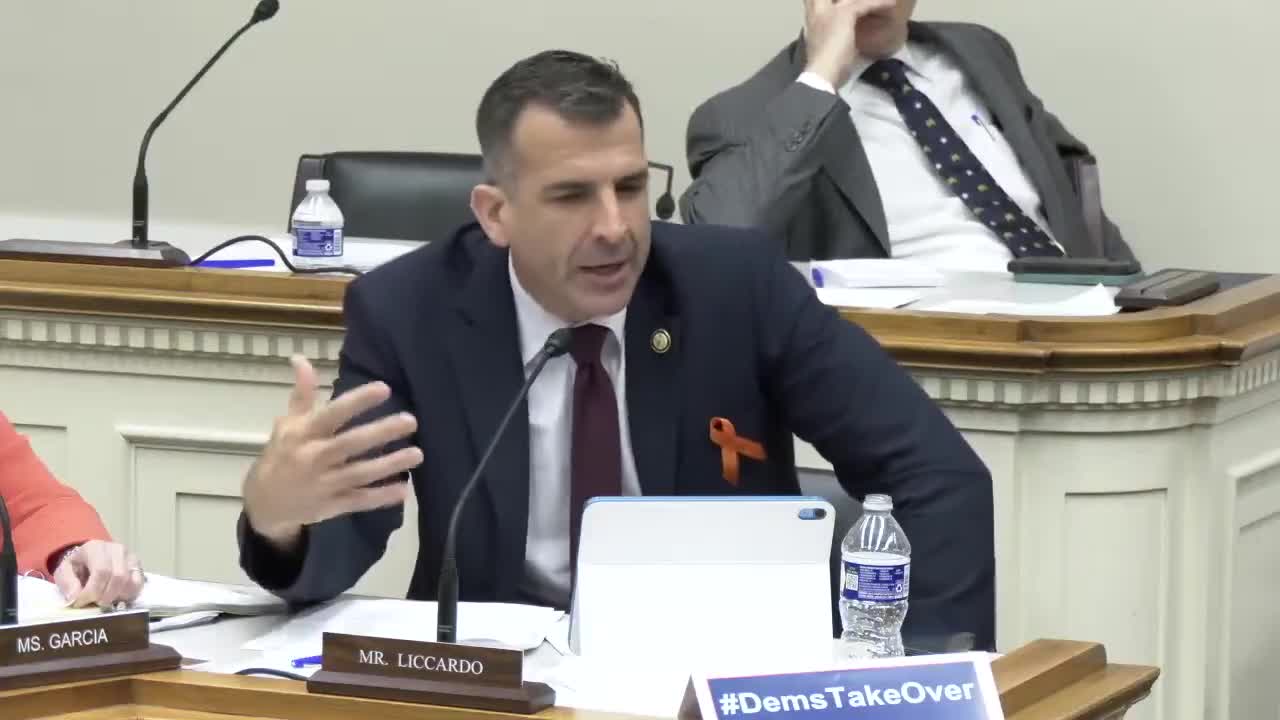Congress debates crypto regulations and their impact on remittances and investor protection
June 07, 2025 | Financial Services: House Committee, Standing Committees - House & Senate, Congressional Hearings Compilation
This article was created by AI summarizing key points discussed. AI makes mistakes, so for full details and context, please refer to the video of the full meeting. Please report any errors so we can fix them. Report an error »

The U.S. House Committee on Financial Services convened on June 7, 2025, to discuss critical issues surrounding cryptocurrency regulation, focusing on the adequacy of existing regulatory bodies and the implications of proposed legislation.
The meeting began with a discussion on whether a separate self-regulatory organization (SRO) for cryptocurrency is necessary. One participant expressed skepticism about the need for an additional SRO, advocating instead for empowering existing organizations like the National Futures Association (NFA) and the Financial Industry Regulatory Authority (FINRA). The speaker emphasized the importance of the cryptocurrency industry taking proactive steps toward self-regulation to enhance standards and cybersecurity measures, although they acknowledged that progress has been slow.
The conversation then shifted to the regulation of collectibles, with a focus on how to approach items that may not fit neatly into existing categories of securities or commodities. The speaker suggested that an economic function-based approach could be more effective, given the diverse nature of tokens and their potential representations.
Representative Garcia raised concerns about the effectiveness of the Clarity Act in creating a more efficient remittance ecosystem, particularly for underserved immigrant families. A witness responded that while the Clarity Act may not directly address these issues, stablecoin legislation could offer potential benefits for remittances, provided there is a suitable regulatory framework.
The discussion continued with an examination of the average cryptocurrency investor profile. It was noted that current usage of cryptocurrency for remittances is low, with stablecoins representing less than 1% of transactions. Concerns were raised about the demographic of cryptocurrency users, particularly regarding the potential for exploitation of vulnerable populations, including young men and minority groups. The witness highlighted that many users engage with cryptocurrency for speculative purposes, which raises questions about investor protection and the risks associated with gambling-like behavior.
The meeting concluded with a critical assessment of the proposed legislation, with some members arguing that it primarily benefits wealthy investors and fails to protect lower-income individuals. The lack of safeguards against fraud and the irreversible nature of cryptocurrency transactions were highlighted as significant risks for consumers. Overall, the discussions underscored the complexities of regulating a rapidly evolving financial landscape and the need for a balanced approach that prioritizes consumer protection while fostering innovation.
The meeting began with a discussion on whether a separate self-regulatory organization (SRO) for cryptocurrency is necessary. One participant expressed skepticism about the need for an additional SRO, advocating instead for empowering existing organizations like the National Futures Association (NFA) and the Financial Industry Regulatory Authority (FINRA). The speaker emphasized the importance of the cryptocurrency industry taking proactive steps toward self-regulation to enhance standards and cybersecurity measures, although they acknowledged that progress has been slow.
The conversation then shifted to the regulation of collectibles, with a focus on how to approach items that may not fit neatly into existing categories of securities or commodities. The speaker suggested that an economic function-based approach could be more effective, given the diverse nature of tokens and their potential representations.
Representative Garcia raised concerns about the effectiveness of the Clarity Act in creating a more efficient remittance ecosystem, particularly for underserved immigrant families. A witness responded that while the Clarity Act may not directly address these issues, stablecoin legislation could offer potential benefits for remittances, provided there is a suitable regulatory framework.
The discussion continued with an examination of the average cryptocurrency investor profile. It was noted that current usage of cryptocurrency for remittances is low, with stablecoins representing less than 1% of transactions. Concerns were raised about the demographic of cryptocurrency users, particularly regarding the potential for exploitation of vulnerable populations, including young men and minority groups. The witness highlighted that many users engage with cryptocurrency for speculative purposes, which raises questions about investor protection and the risks associated with gambling-like behavior.
The meeting concluded with a critical assessment of the proposed legislation, with some members arguing that it primarily benefits wealthy investors and fails to protect lower-income individuals. The lack of safeguards against fraud and the irreversible nature of cryptocurrency transactions were highlighted as significant risks for consumers. Overall, the discussions underscored the complexities of regulating a rapidly evolving financial landscape and the need for a balanced approach that prioritizes consumer protection while fostering innovation.
View full meeting
This article is based on a recent meeting—watch the full video and explore the complete transcript for deeper insights into the discussion.
View full meeting